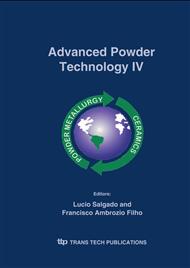p.369
p.375
p.381
p.388
p.394
p.401
p.407
p.413
p.420
Alkaline Activation of Kaolinitic Soils for the Production of Special Binders
Abstract:
The alkaline activation of Portland cement based materials, ground granulated blast furnace slag and pozzolans has been accomplished with success since the decade of 40, in several countries. The practicability of the use of the alkalis opens new opportunities for the production of special binders with properties different from those presented by the ordinary Portland cement. Besides the chemical composition, the mechanical strength of these alkali-activated materials depends a lot on the reactivity of the raw material, property that is influenced mainly by the specific surface area and crystalline degree of the raw material. Thus, an experimental program was carried out aiming at evaluating the influence of these variables in the compressive strength, at 3, 7 and 28 days of age, for mortars manufactured using alkaline activation of kaolinitic soils. The results have shown that the most suitable combination, in terms of mechanical strength and economy of energy, was the mortar manufactured with soil receiving a ½ hour grinding time and calcined at 650oC during four hours.
Info:
Periodical:
Pages:
394-400
Citation:
Online since:
November 2005
Authors:
Price:
Сopyright:
© 2005 Trans Tech Publications Ltd. All Rights Reserved
Share:
Citation:


